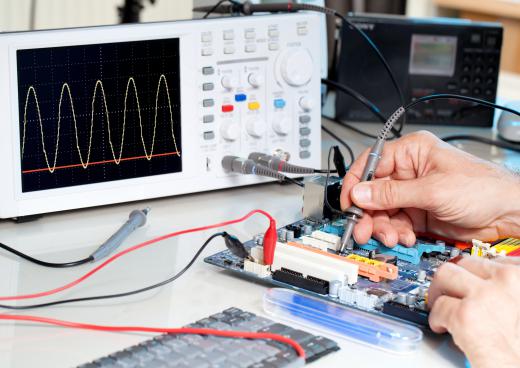A voltage multiplier is an electronic device containing specific voltage-increasing circuits that are used when low-voltage alternating current, or AC, power is used to supply another electronic device that requires a higher voltage input, such as direct current, or DC power. These types of circuits have been utilized in many different aspects of the electronics industry because of their ability to efficiently convert power from low voltage to high voltage. A voltage multiplier can be used in everything from the common household television to the equipment used to test the power of lightning strikes for safety testing done on products that may be prone to such strikes.
The specific types of circuits found in a voltage multiplier make possible the conversion of low-voltage power sources into high-voltage sources of electrical power through the use of capacitors and diodes. The capacitors and diodes work in conjunction with each other throughout the circuit to intensify the power of the electrical supply, while also regulating the power as it completes the circuit. The flow of a voltage multiplier is always AC on input and DC on output, showing the user a significant increase in the voltage generated, while also maintaining the low current needed to operate the device. Voltage multipliers differ from transformers in that they are only able to increase voltage while decreasing current, whereas transformers have the capability of also decreasing voltage while increasing current.

Each specific type of voltage multiplier has different capabilities, depending on the stages in the circuit of the multiplier. For instance, if the multiplier only has one stage, it will only be able to double the input voltage as the current passes through the circuit. Voltage multipliers are able to multiply an input voltage by just over four times before the circuit is completed, outputting a much higher voltage at a much lower current. As a result of this limitation, the load entering the multiplier is required to be constant, because at the rate the voltage is multiplied, any small fluctuation in the voltage entering the multiplier will cause a great disruption in the output voltage as it exits the circuit through the multiplier outputs.
One of the most common uses for voltage multipliers is in the circuitry of the television. Due to all of the inner workings of a television, the voltage coming into the television must be regulated and multiplied in order to operate the picture tube or the screen. These types of circuits are also used in items such as radar scopes and oscilloscopes as well, as these devices require a high-voltage power supply while providing a low, steady current.
